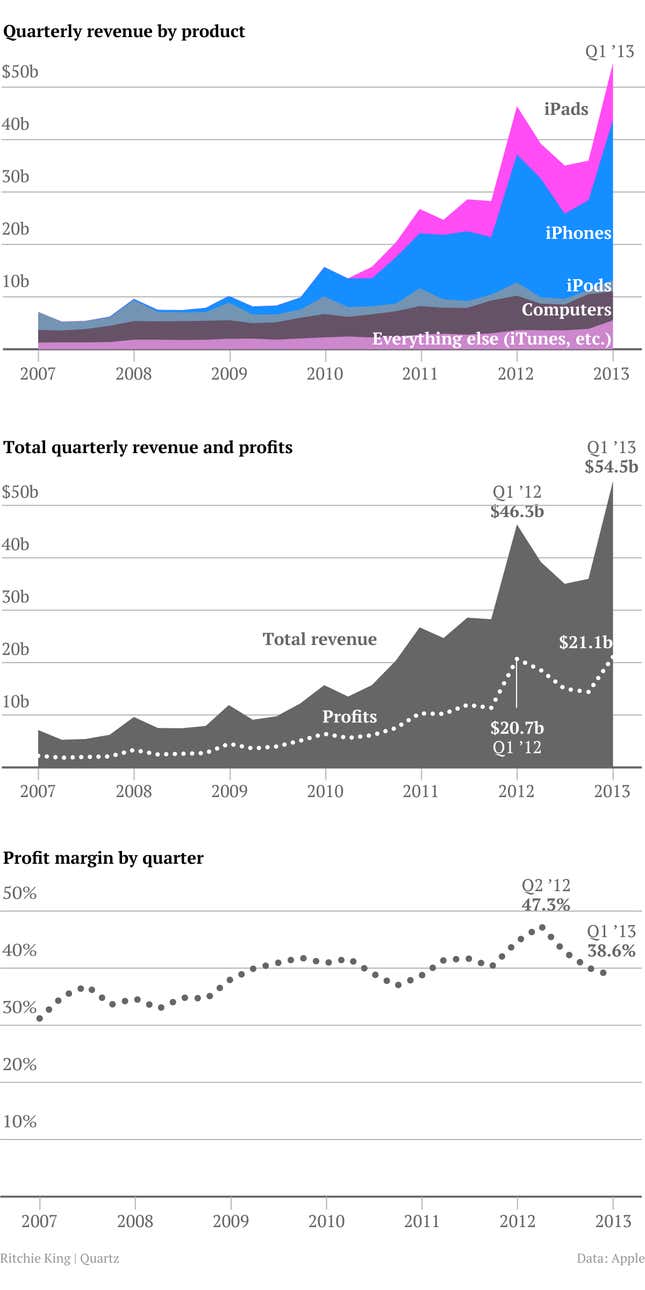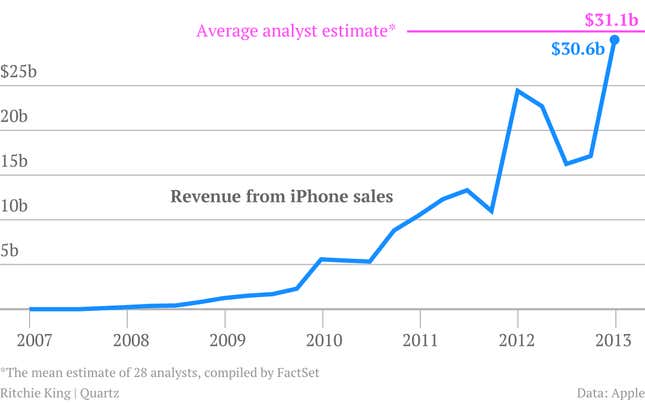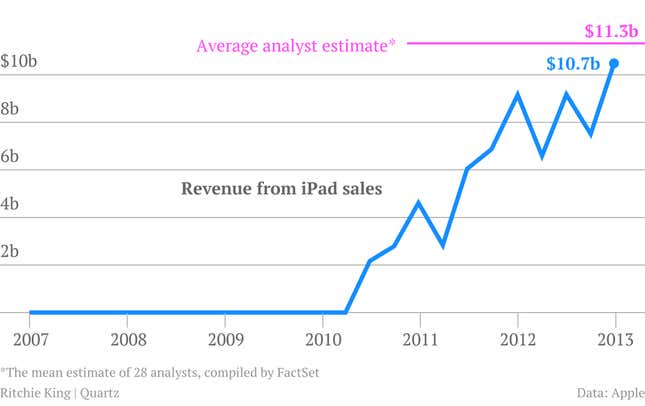Apple just reported that it made a profit of $13.1 billion on $54.5 billion in revenue last quarter, which spanned the last three months of 2012, including the launch of two new products—the iPhone 5 and iPad Mini—and the holiday shopping season. The company sold 47.8 million iPhones, 22.9 million iPads, 4.1 million Macs, and 12.7 million iPods.
Revenue, profits, and margins

iPhone sales
It was the first full quarter with the iPhone 5 on the market. Earlier this month, the Wall Street Journal reported that Apple was scaling back orders of four-inch iPhone 5 screens, suggesting sales weren’t as strong as the company anticipated. Analysts had expected Apple would report selling 49.55 million iPhones last quarter; the actual figure was 47.8 million. The company doesn’t break down sales by type of iPhone.

iPad sales
Apple introduced the iPad Mini at the beginning of November, a month into the quarter. Because it’s smaller and less expensive, the Mini has a narrower profit margin than its full-sized sibling. (Apple doesn’t divulge how much it costs it to make its devices, but estimates of both the low-end iPad Mini and the low-end iPad 3 suggest that Apple earns at least $50 more on the larger tablets.) Thus, one big question is whether the Mini will cannibalize sales of the larger iPad over time.
